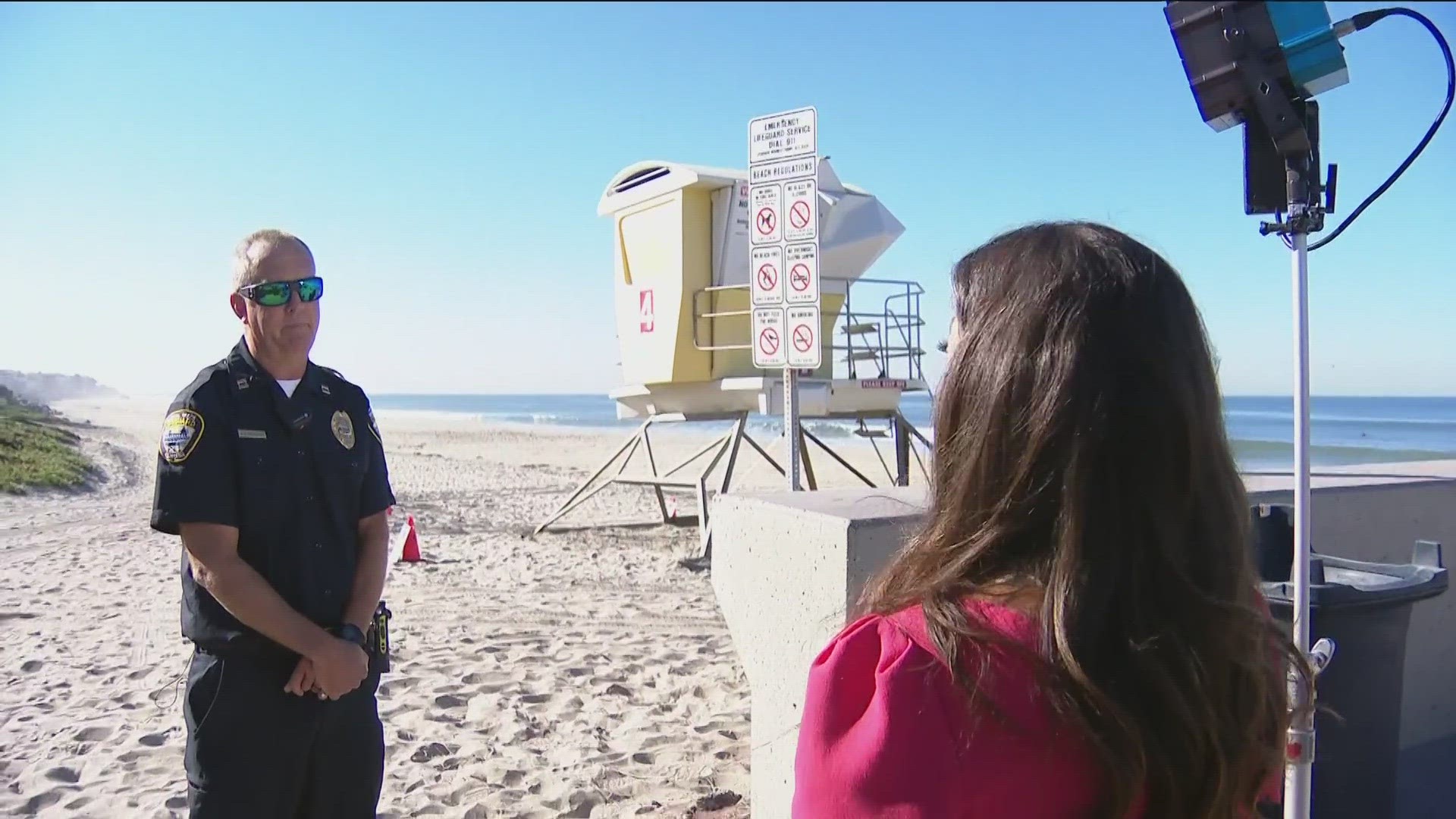SAN DIEGO — The sewage in the South Bay is impacting the way of life for many people, from the economy to their health. For those whose main job is to work in the ocean, it’s taking a severe toll.
It’s a sad sight across the beaches in Imperial Beach - barely anyone enjoying the water and the few who are, are taking a big risk. That’s because these waters are full of bacteria. The type of bacteria you would find in human or animal waste. Anything that gets flushed or sent down the drains, channels, and streets of Tijuana, Mexico, flows here.
Jason Lindquist is the Marine Safety Captain with the City of Imperial Beach, he said, “This problem is the worst it’s been. I grew up here and the urbanization in Mexico and its infrastructure gets taxed there, it’s already taxed, which is why we get a lot of pollution.”
Captain Lindquist wishes he could say it was a rare occurrence, “it’s pretty bad you get lifeguards with headaches. The whole city can smell it. Most lifeguards get headaches on days like that. We’ve had a couple of people who’ve had rashes different things.”
There’s no obvious gate blocking off the beach but there are signs up that warn of contaminated water. Not everyone sees them so a main part of a lifeguard's job is to warn people of the bacteria. For example, they’ll go up to families with little kids playing in the water to let them know it's not safe. Not all swimmers are aware or care about the extent of the pollution.
It's even in the air. Recent studies show what people are breathing along IB’s coast can hurt them.
Where you’d normally see the surf report, Captain Lindquist points out they also have a sign at the lifeguard station with updated bacteria counts. Showing what sections of water to stay out of.
The south side of Imperial Beach has been dangerously contaminated for nearly 800 days.
“We’re constantly going in and out of this and nobody knows what THIS is,” Captain Lindquist has been a lifeguard for 35 years, 20 of them in Imperial Beach. So Neda asked him if the sewage has hurt his health, he said, “I tend to take care of myself I think I’m fine but we don’t know about long-term effects that’s one thing becoming an issue with staff and morale.”
Keeping lifeguard staff is a huge problem. This summer they only had 60% of their shifts filled, “this has taken its toll on staff for sure.”
They will still do rescues, subjecting their eyes, nose, mouth, and any open wounds to contamination.
“We still go in, we still make rescues whether its tourists, surfers, locals or even smuggling. Once they (IB lifeguards) go in, when they get out they have to do an exposure report. If they get sick it becomes a worker’s comp issue."
They can’t even train in the ocean they are tasked to guard. “Normal day with clean water, lifeguards are doing training in the water where they work. Currently, we send lifeguards to another city to train and we pay for swim time at a pool.”
And the future here is not so promising because they had to cancel the junior lifeguards' program this year. Without that training program, it gets even tougher to recruit lifeguards.
“We want the sewage to stop, water quality to be clean, so we could recruit and go back to full staff. And the public can be as safe as we can make it, that’s the goal,” Captain Lindquist said.
Until then, it’s forcing the brave men and women to take on challenges along the US-Mexico border that no other lifeguards face.
Captain Lindquist said IB lifeguards make about $18 an hour which is less than most fast food workers so their lower pay is also part of the problem. According to Indeed.com City of San Diego Lifeguards make about $21 an hour.

